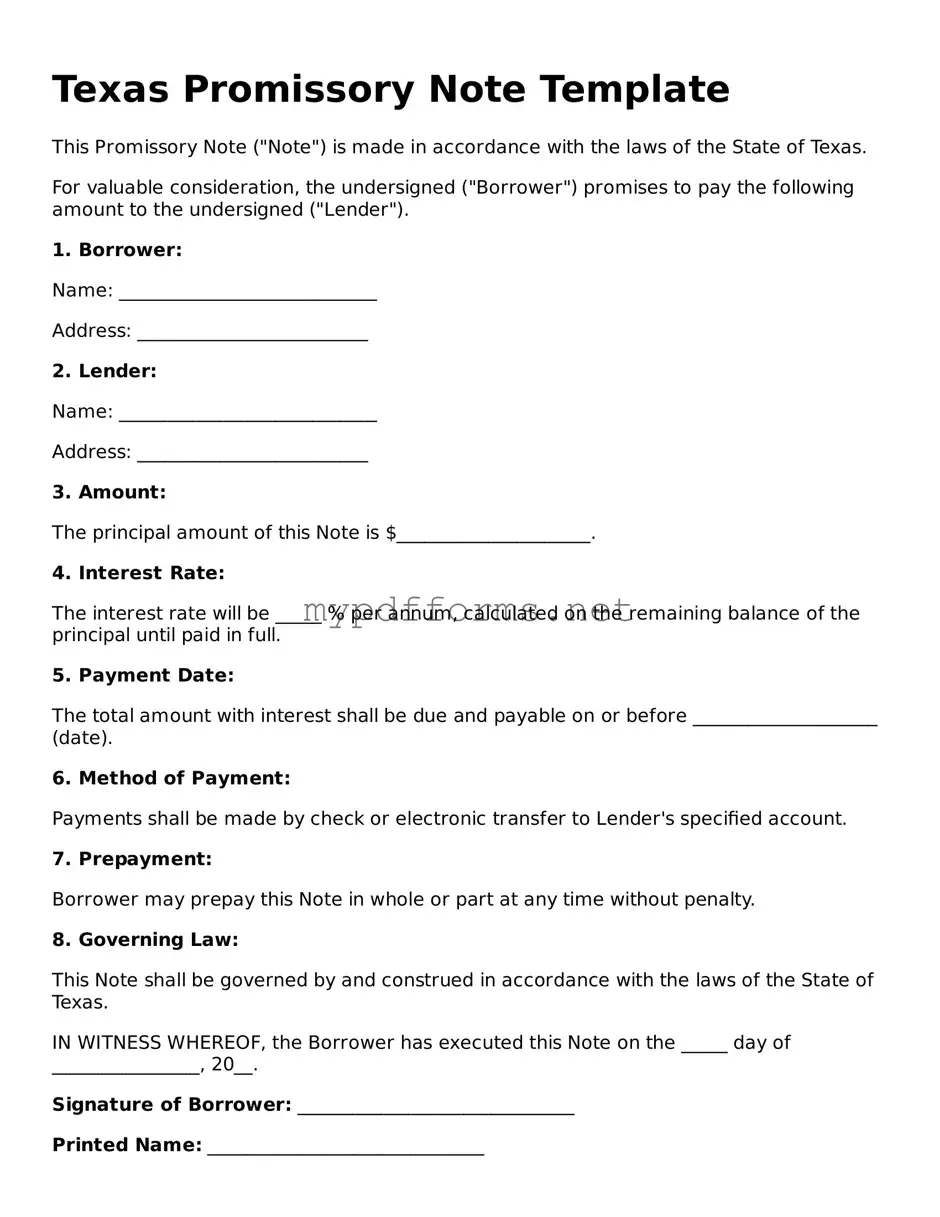The Texas Promissory Note is similar to a Loan Agreement, which outlines the terms and conditions of a loan between a lender and a borrower. Both documents specify the principal amount, interest rate, repayment schedule, and any penalties for late payments. However, a Loan Agreement typically includes more detailed provisions regarding the rights and responsibilities of both parties, as well as collateral requirements, if applicable. This makes the Loan Agreement a more comprehensive document compared to the straightforward nature of a Promissory Note.
A Security Agreement also shares similarities with a Texas Promissory Note. Both documents involve the borrowing of funds, but a Security Agreement specifically grants the lender a security interest in the borrower's property as collateral for the loan. While the Promissory Note focuses on the promise to repay the borrowed amount, the Security Agreement details the collateral and the lender's rights in case of default. This adds an additional layer of protection for the lender.
The Texas Promissory Note is akin to an IOU, which is a simple acknowledgment of a debt. An IOU states that one party owes a specific amount to another party, but it generally lacks the detailed terms found in a Promissory Note. While an IOU can serve as a basic record of a debt, it does not usually include information about interest rates, repayment schedules, or legal recourse, making it less formal and less enforceable in court.
A Loan Modification Agreement is another document that bears resemblance to the Texas Promissory Note. This agreement is used when the original loan terms need to be changed, often due to financial hardship. Both documents involve the original loan, but the Loan Modification Agreement specifically alters the terms, such as the interest rate or repayment period. In contrast, the Promissory Note remains static unless explicitly modified.
When navigating through the various financing agreements and contracts, it's essential for businesses to also be aware of the statutory requirements they must meet, such as those associated with unclaimed property. To assist in this process, the Illinois Forms are available, providing necessary documentation to report unclaimed assets in compliance with state laws, ensuring that businesses remain informed and compliant while managing their financial obligations.
A Lease Agreement can also be compared to a Texas Promissory Note in terms of payment obligations. Both documents establish a financial commitment, but a Lease Agreement specifically pertains to the rental of property. It outlines the terms of occupancy, including rent payments, duration of the lease, and maintenance responsibilities. While a Promissory Note focuses on a loan, a Lease Agreement is centered on the terms of use and payment for the property.
The Texas Promissory Note is similar to a Personal Guarantee, which is often used in business transactions. A Personal Guarantee involves an individual agreeing to be responsible for a debt if the primary borrower defaults. Both documents establish a financial obligation, but a Personal Guarantee adds a personal liability component, ensuring that the lender has recourse against the individual, not just the business entity.
Lastly, a Credit Agreement resembles the Texas Promissory Note in that it details the terms of borrowing funds. A Credit Agreement typically applies to a line of credit or revolving credit account, outlining the borrowing limits, interest rates, and repayment terms. While both documents create a legal obligation to repay borrowed funds, a Credit Agreement often includes more complex terms regarding the use of credit and repayment flexibility, which may not be present in a standard Promissory Note.
